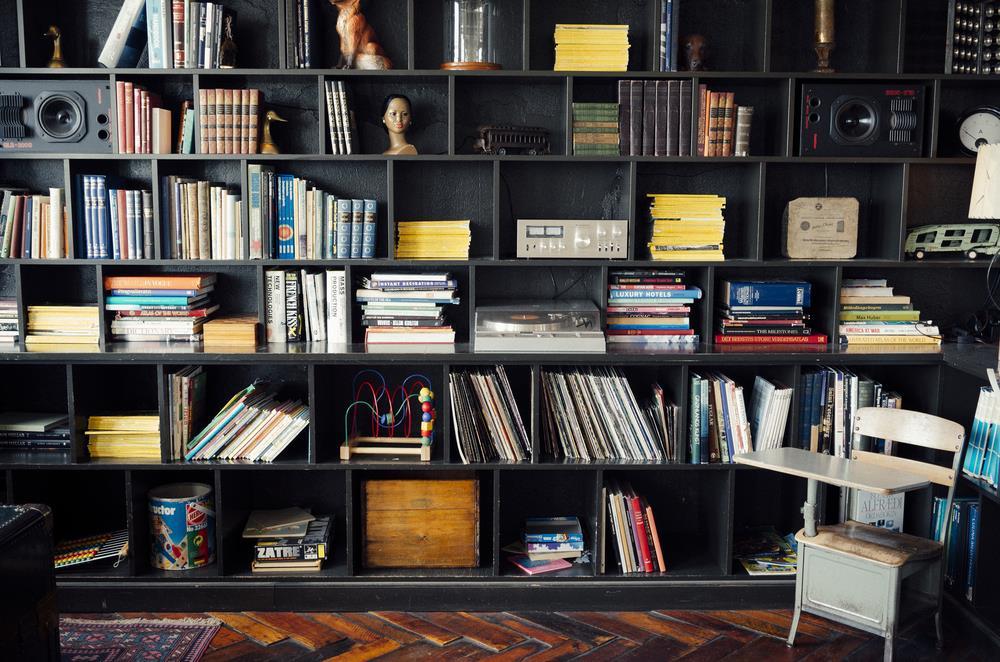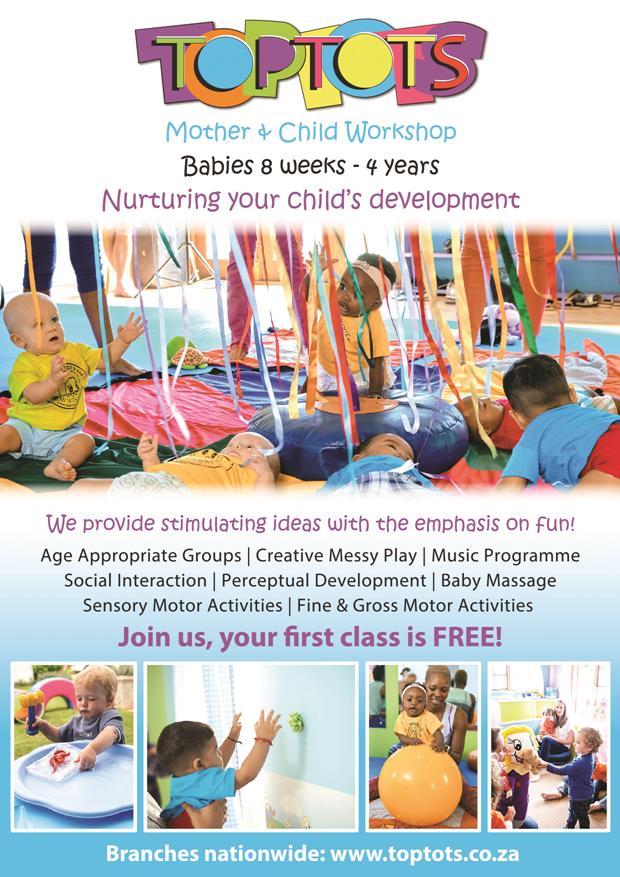
7 minute read
Becoming Disciplined: A Child's Achievement - Montessori Mag-nificence Magazine
By Dr Paul Epstein

Advertisement
Parents, teachers, and other adults understand the necessity for disciplining children. Discipline typically refers to what adults must do if children are to become obedient. Adults, according to this understanding, must be consistently vigilant. Reward children when they are good. Otherwise, punish children to control their wrongful impulses and desires. If adults are successful, disciplined children should become morally ethical and responsible citizens.
In practice, however, the adult-in-control approach is problematic. Adults simply cannot consistently give out rewards. In fact, it is actually counterproductive to do this. Children stop behaving for rewards once their basic needs are fulfilled. Similarly, adults cannot consistently punish bad behavior. Perhaps this is a blessing because over time punished children become confused and angry. They become passively compliant, and their selfconfidence and self-esteem suffers. Discipline as control leads children to become co-dependent on others who decide their worth.
An alternative is to recognize discipline as an achievement. Adults used to say, for example, my discipline is woodworking; my discipline is the arts or science. Years of study and practice are required to achieve a discipline. A master craftsperson is someone who knows and implements the standard practices of her or his discipline. A master craftsperson can innovate and create new practices and new disciplines.
In this view, we understand children engage constantly in self-creation. That is, becoming disciplined is a child’s personal accomplishment. So too are learning to speak and walk, developing coordinated movements and comprehension, and being able to socialize and contribute. The Italian physician and educator Dr. Maria Montessori (1870-1952) held children in high esteem as creators of themselves through self-discipline.
"[The child] has the power to develop everything which is man. He creates a being who can orient himself in the environment. Without language, he learns to speak; without intelligence, he constructs it; he coordinates his movements and learns to walk; he becomes interested in things. Nothing existed. Everything has been constructed by him. In him we are confronted by the mysterious, miraculous fact of creation." (2)
The “mysterious, miraculous fact of creation” is each child’s inner plan of selfdevelopment which propels them to become adults. Remarkably, no two children develop in the same way or in the same time; each child is unique. However, children are not consciously aware of themselves; they are unable to articulate their inner needs. These are, Montessori wrote, the child’s “secret.” This secret “is the principle of their own growth which they cannot possibly explain to anyone ....” (3) to appropriately nurture and guide the child who is never conscious of her or his inner plan for growth. Discipline in this understanding is not a verb. We do not discipline children. Discipline is an achievement; discipline is a celebration of independence heard in the joyful cry of the child who proclaims, “I can do it!”
Children work naturally and unceasingly to become self-disciplined. A child’s purposes for work differ from those of an adult. The child is oriented to process, to the process of perfecting themselves and becoming an adult through constant growth. Adults work to produce and accomplish external purposes; adults are product or results oriented. A child is energized by work; unlike an adult, Montessori discovered, a child is refreshed by work.
"A child possesses a driving force that is different from that of an adult. The adult always acts for some external motive that demands his strenuous efforts and arduous sacrifices .... A child, on the other hand, does not become weary with toil. He grows by working and, as a consequence, his work increases his energy." (4)
Discipline begins when children start to coordinate their movements. At first a child’s movements may lack coordination. Then, in time, and after tremendous repetition, the child’s movements become coordinated. Discipline is a result of an emerging ability to self-control movement and desire. Coordination also develops conscious intelligence. Children become more capable and educated as they become self-disciplined.
Becoming self-disciplined requires support and assistance from adults who may need to obtain new knowledge and skills. With respect to discipline, adults should:
1 .Understand achieving discipline requires freedom; 2.Recognize the stages children grow through as they become disciplined; 3.Offer children necessary and appropriate guidance, and 4.Know how to prepare age-appropriate environments.
Discipline and Freedom
Curiously, discipline is necessary for true freedom. (5) Freedom is not doing whatever, and whenever, one feels like doing. Freedom cannot be given because freedom is not a privilege. Instead, freedom requires discipline. Freedom can only occur within laws and limits. Freedom requires discipline. Discipline, acting obediently with respect to laws and limits, is a necessary condition of freedom.
"Wecallanindividualdisciplinedwhenheismasterofhimself,andcan, therefore,regulatehisownconductwhenitshallbenecessarytofollow someruleoflife. Suchaconceptofactivedisciplineisnoteasyeither to comprehend or apply. But certainly it contains a great educational principle, very different for the old-time absolute and undiscussed coerciontoimmobility."(6)
If children are to achieve self-discipline, the adults in their lives must define and maintain limits. Children can then work to develop self-discipline within the context of limits. The consequences of behaving without limits are dire; specifically, children will struggle to evolve inner control. In addition to limits, children require respect. We can respect each child’s unique capabilities and potentials. And this requires, Montessori wrote, that we understand that children must become disciplined if they are to fulfill their unique capabilities and potentials.
"And what do we see once all that is accomplished? When we see humanityrealizingobedientlytheharmonythatrendersitfree,wesee itisfullofjoy....Joycanbeseenasauniversalsignofharmony,andit mayshowus that we are on the roadto freedom - forexample, with regardtothechildwewouldliketoeducate."(7)
Freedom begins when we teach children right from wrong. We do this best by showing or modeling. Children are not at liberty to use objects however they please. They may not throw, run through a room, scream, push or hurt others. Instead, we must show children how to appropriately behave, and this should include showing children how to care for themselves, care for others, use the materials, and even how to care for home, school, and other environments.
Stages: Becoming Self-Disciplined
Children grow through stages to achieve discipline. At first the movements of very young children are disorderly. They may struggle initially to focus and direct their attention to their activities. They may move from one activity to the next with perhaps a passing interest. These children distract easily; their impulses command. They hear or see something, and they want that. A day does come, however, when a young child finds a particular activity that she or he becomes compelled to work with. The child becomes captivated and has to investigate and explore the objects. The child’s movements slow and become less random. When children can focus their attention, they naturally explore objects. A child thinks with objects; an adult thinks with words. Children use objects to develop memory, comprehension, and reasoning.
Profound and deep interest in one activity leads the child to take interest in many other activities. The child now works with considerable repetition and with concentration. At this stage, the objects children use must be carefully crafted. With each repetition children discover in the materials perceptual distinctions, patterns, and relationships such as size, color, shape, number, or letter. Intelligence develops as distinctions, patterns, and relationships become understood.
In time the child’s movements become increasingly coordinated and refined;theacquisitionofself-disciplineenablesthechildtoengagein inquiry, in learning. There is tremendous focus and with purposeful movements. After long periods of concentration, children become peacefulandpleased. Theyarenotfatigued. Instead,childrenareclam andinvigorated. There isa notedabsence ofaggression andcovert or overt hostility. They are kind and courteous. The child has acquired discipline;thechildiscapableofself-reliance.(8)
The child’s achievement of discipline requires adults refrain from imposing their will over children. Domination and submission to authority, Montessori discovered, result with an imperfect development.
"Freedom consists of liberating children from adult influence and their dependence on the bond which has the greatest influence upon creation. To give children freedom we must free them from the direct adult influence in order that they may be spontaneously free with regard to the laws of their inner nature." (9)
Self-disciplined children share certain characteristics. Their movements are ordered, and they tend to prefer orderly environments. They are attached to reality. They are quietly cheerful. They are persistent, and they are both independent and filled with initiative. (10) Self-disciplined children become less possessive. They become more interested in understanding how something works instead of having to possess it. They treat objects carefully and delicately.
The role of the adult is to assist and guide. They show children how to do for themselves. To do this, adults must also understand how to prepare an environment for children.
The Prepared Environment
A prepared environment replaces adult control. The prepared environment is established for the children, and it may occupy one or more rooms in the home, the outdoors, or a classroom at a school.
The prepared environment offers a number of age appropriate and meaningful learning materials and activities. At home, or in a school, these are presented in an orderly and organized manner. Each activity has its own basket or tray, and these are neatly arrayed on open shelves. Because children think with objects, adults must refrain from lengthy verbal explanations, directions, motivations, and rewards. Instead, these thwart children’s intentions for purposeful development. However, adults do need to provide limits in the form of behavioral ground rules such as do not run or return materials to their places on shelves.
An assisting adult shows children how to use the materials. The presentation is a lesson which both teaches the child a concept or skill and shows the child how to independently choose and use the materials. This allows children to then freely explore and investigate the materials to satisfy their personal interests and needs. When children freely choose their activities, the also evolve their ability to make decisions. New activities replace older ones as children grow and their interests evolve.
Children develop more completely when they make choices. A choice is neither random nor capricious. Children seek to choose activities that satisfy their inner needs and learning purposes. Children choose discipline. Children who have achieved discipline demonstrate a tremendous ability for perseverance. When children first concentrate, they use a material repeatedly. In time, repetition becomes a habit of completing self-initiated activity.
Acquired self-discipline is a point of departure. The self-disciplined child desires to become a complete person. This too is age appropriate. During the elementary school years, children naturally want to know everything. During the adolescent years, children naturally want to make economic decisions that lead to social contributions.
http://www.paulepstein.us/blog/2015/7/27/becoming-disciplined-a-childs-achievement


